How it Works: Air-Conditioner Efficiency
Because air-conditioning systems typically are sized to keep a home cool on the hottest days of the year, they waste energy most of the time.
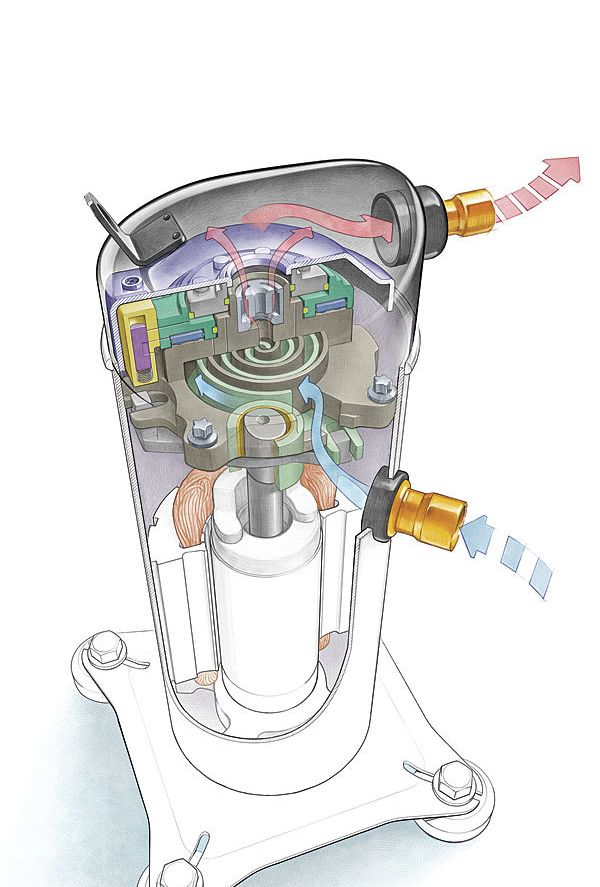
Synopsis: Because air-conditioning systems typically are sized to keep a home cool on the hottest days of the year, they waste energy most of the time. Two-stage compressors, however, allow systems to run at either 100% capacity or 67% capacity, depending on the need. In this “How It Works” article, contributing editor Sean Groom explains how a two-stage compressor works. First, a scroll compressor pressurizes refrigerant and pumps it between indoor and outdoor coils. Next, in response to signals from the home’s thermostat, a solenoid pilot valve either stays in the open position for partial-capacity operation, or in the closed position for full-capacity operation. Detailed illustrations in the PDF below show both the refrigerant-compression process and how the pilot valve determines operational capacity.
As explained in “What’s Cool in Air-Conditioning”, central air-conditioning systems typically are sized to keep a home cool on the hottest days of the year. This is a good thing on sweltering afternoons, but it’s a waste of energy the other 80% of the time, when conditions are warm or humid but not oppressive. To save energy, manufacturers have redesigned the compressor that is the heart of an air-conditioning system so that it can effectively operate as two differently sized systems. A two-stage compressor functions at 100% capacity when the mercury soars, but at only 67% when temperatures are milder.
Most residential air conditioners use a scroll compressor, which has earned a reputation for durability thanks to its relatively few moving parts. By introducing a small valve that opens and closes bypass ports in the compression chamber, the compressor can vary its capacity. Here’s how it works.
Scroll compresses refrigerant
A scroll compressor, which pressurizes refrigerant and pumps it between indoor and outdoor coils, is the core of most central air-conditioning systems. The scroll portion of the unit consists of two thick metal disks, each machined with a deep spiral cavity. These disks nest together, with the lower one orbiting inside the fixed upper one. Refrigerant gas enters along the outside edge of the spiral and is pulled toward the center by the elliptical orbit, which continuously squeezes the gas, raising its pressure and temperature as it moves toward a port at the center of the spiral. A two-stage scroll compressor has two bypass ports that divert a portion of the refrigerant during low-capacity operation, resulting in energy savings.
Valve moderates scroll capacity
Partial capacity
The compressor’s capacity is controlled by the solenoid pilot valve, which diverts pressurized gas to open or close the scroll’s bypass ports in response to signals from the home’s thermostat.
When full-capacity cooling isn’t required, the pilot valve remains in the open, default position. Intermediate-pressure gas bleeds into a small chamber above the modulation ring and passes through the pilot valve into a larger chamber under the ring. The buildup of gas in this chamber lifts the modulation ring, opening the bypass ports. Refrigerant gas in the outer third of the chamber is diverted through these ports, reducing capacity to 67%.
Full capacity
When the weather heats up and full-capacity cooling is needed, the thermostat signals the pilot valve to shut off the supply of intermediate-pressure gas below the modulation ring and allow the gas there to escape. At the same time, intermediate-pressure gas from the bleed port is trapped in the chamber above the modulation ring, pushing it down to block the bypass ports. With the bypass ports closed, refrigerant is compressed across the entire width of the scroll, and capacity is at 100%.
For more diagrams and details on how AC efficiency works, click the View PDF button below.
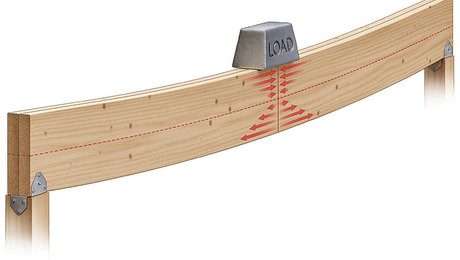
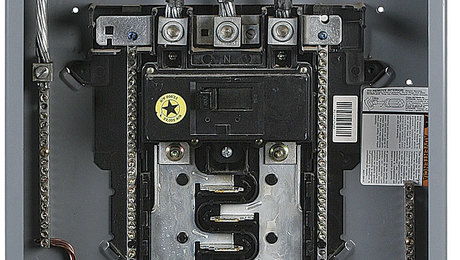
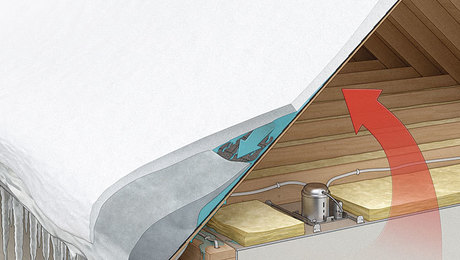
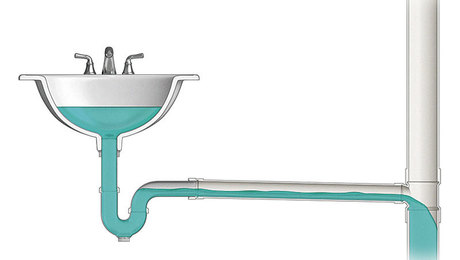



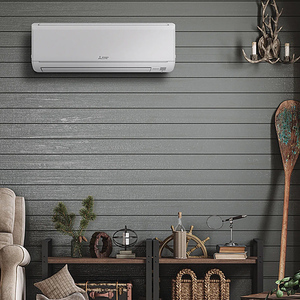





















View Comments
This post is a great explanation of how air conditioners work and how to measure their efficiency. The author does a good job of explaining the different factors that affect air conditioner efficiency, such as the SEER rating, the size of the unit, and the insulation in your home.
I think the most important takeaway from this post is that air conditioner efficiency is important for both your comfort and your wallet. A more efficient air conditioner will use less energy, which will save you money on your energy bills.